BioBlitz Bits: The Bat Pack at Baker's Woods
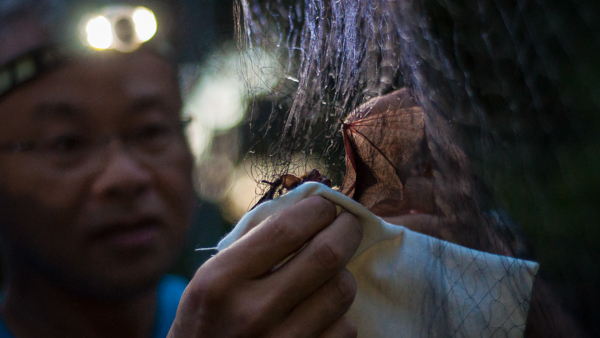
Guest blog written by 2015 Environmental Visual Communication student Kendra Marjerrison
It squeaked surprisingly loud and squirmed around in the light of our headlamps, looking for a way out. The young BioBlitz participants moved in closer for a better look; this was not something you could see every night. Lucky for this brown bat, it was in the hands of an expert, Dr. Burton Lim, the ROM's Assistant Curator of Mammalogy. Burton has been researching bats for over 30 years. From the Iwokrama Forest in Guyana, to DNA barcoding at the ROM, Burton has worked with over 350 different species. He has also assisted in discovering 8 species of bats that were new to science.
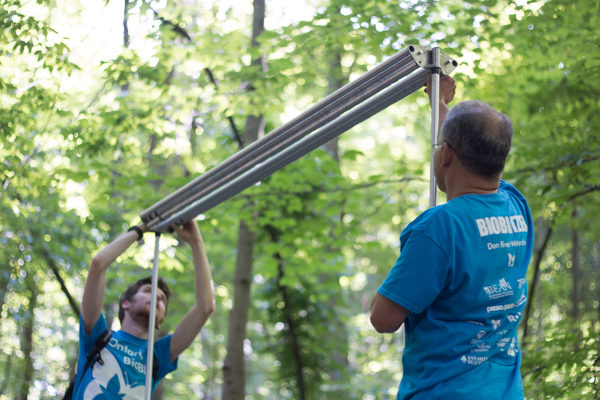
Along with a group of fellow biologists, naturalists, and citizen scientists of all ages, Burton spent the evening documenting the bat species that were present at Baker’s Woods, a locality that was being surveyed for the 2015 Ontario BioBlitz flagship event in the Don River Watershed. The first part of the evening was spent setting up traps to try and catch the small flying mammals, like the harp trap in the above photo. A harp trap is used to capture bats efficiently without having to disentangle them as is needed with mist nets or hand nets. Late into the night, while our sleepy but excited group huddled over the eight Big Brown Bats that were caught, you couldn’t help but feel Burton’s passion for these often misunderstood flying mammals.
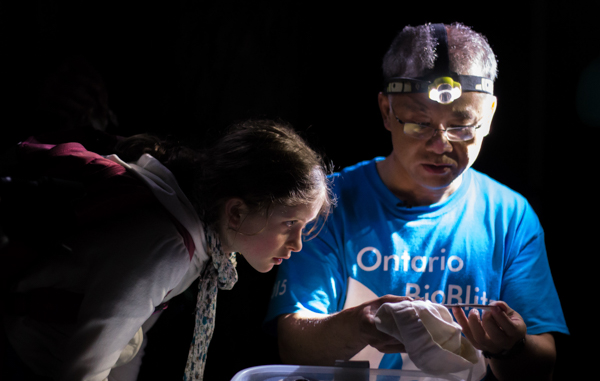
“There are a lot of myths about bats, but they are actually quite beneficial,” Burton explained to his group of Guided BioBlitz participants. Bats are effective pest-controllers, and are often considered a keystone species. Many species even help to pollinate and disperse seeds so that our ecosystems can create food, and provide habitat for other animals. They assist with crop growth by eating crop-destroying insects. Their guano (excrement) can also provide a form of fertilizer.
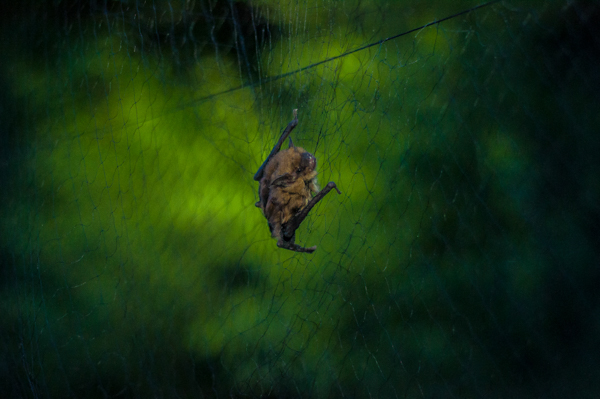
There are currently 150 bat species listed on the IUCN Red List of Threatened Species with conservation statuses as "vulnerable", "endangered", or "critically endangered". In Canada and the United States, little brown bats (Myotis lucifugus) have had populations crash by 90% or more because of White-nose syndrome. 2013 marked the re-listing of the species as "Endangered" on our Federal Species At Risk Act, with scientists across the continent working hard to try and find out how many little brown bats have survived.
Despite these challenges, there is also a growing appreciation for the role bats play in helping humans, and a shift in the cultural perception of bats. Events like the Ontario BioBlitz help people appreciate and understand some of the less well-known and often maligned animals like bats, that can be found close to home in our cities. ROM scientists like Burton hope this will grow public awareness about the importance of biodiversity to our lives, and our global ecosystems.
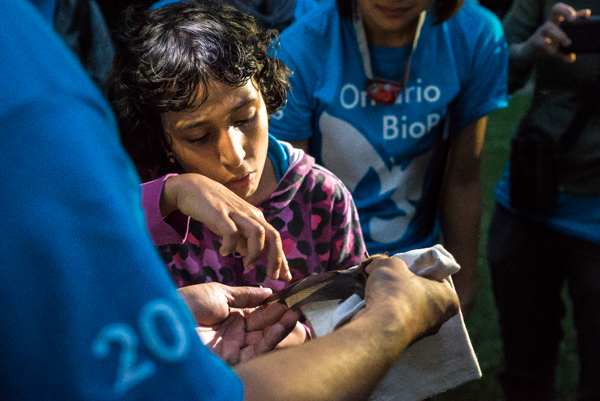
Guest blog edited by Hellen Fu, Assistant Coordinator, Hands-on Galleries
